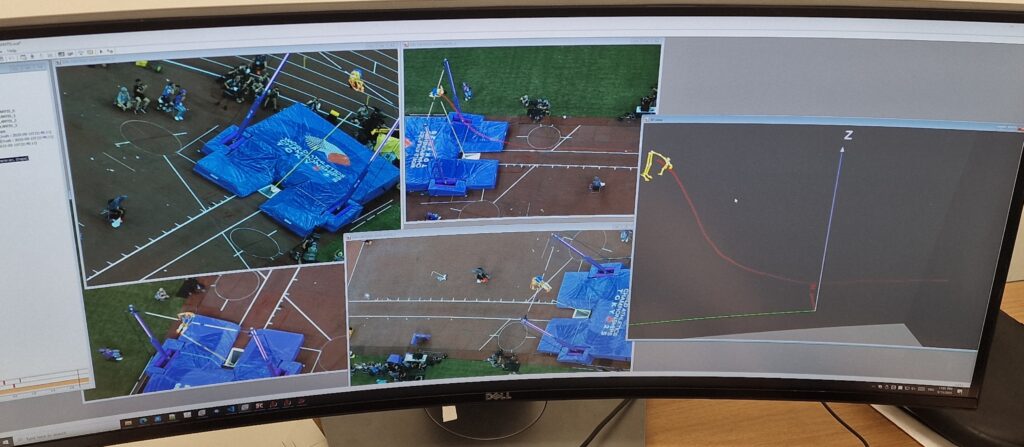Capturing World-Class Performances: Biomechanics Research at the World Athletics Championships
Professor Athanassios Bissas has returned from Tokyo after contributing to biomechanics research at the recent World Athletics Championships 2025, which took place from 13–21 September.
The project focused on the pole vault, one of athletics’ most demanding events. Athletes accelerate along the runway, plant a flexible pole into the take-off box, and convert the energy of their run-up together with the elastic deformation of the pole into vertical lift. Clearing the bar requires precise timing and coordination, and at world-class level the smallest detail can decide success or failure.
To study these fine margins, every jump at the Championships was recorded with four high-speed cameras and processed in 3D. The advanced scientific analysis is being led by Professor Bissas, Professor of Sport and Exercise Technologies at University of Gloucestershire, using data provided by Simi Reality Motion Systems, a company at the forefront of motion analysis techniques.

The system used an advanced AI pose estimation model, trained on a large and diverse dataset of athletics movements, providing a unique advantage in accurately capturing the complex body positions of pole vaulters.
Within just four seconds of each jump, the system produced key statistics, an innovation unimaginable only a few years ago. These recordings included all attempts by the world’s leading athletes, most notably the new World Record of 6.30 m set by Armand Duplantis on 15 September 2025.
Professor Bissas will now lead advanced analysis of the dataset, breaking down movements to better understand world-class performance, with a particular focus on how Duplantis’ successful world record jump differed from his two earlier failed attempts at the same height.
Professor Bissas, from the School of Education, Health and Science, said: “University of Gloucestershire is currently the only institution worldwide with access to this dataset, placing the University at the forefront of applied biomechanics research. This work is expected to demonstrate how biomechanics research can influence and improve the real world of sport.
“Importantly, students on our sport science courses will have the opportunity to work with this footage in their teaching sessions, developing technical skills and an appreciation of how biomechanics impacts performance at the very highest level.”

; ?>)